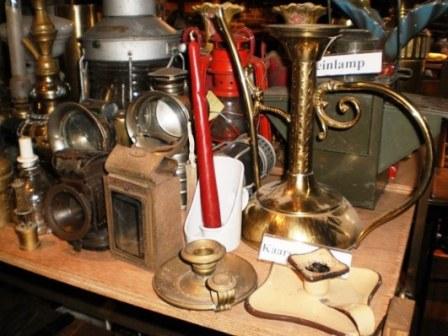The traditional British ”poor man's candle” or rush lights.
Many rushes have a porous interior. After drying, they are soaked with melted grease to a candle.
Soft rush (Juncus effusus) was picked and peeled. The core of the stalk was dried and then passed through hot fat or oil. A grease -soaked band of 75 cm burned nearly an hour and gave a bright light.
This marrow was also used as a wick for oil and kerosene lamps.
 Also long resinous wood chips were used as lighting.
Also long resinous wood chips were used as lighting.
A candle is a wick around which grease or wax (or paraffin..) is.
For the wick dried moss, straw and twisted fibers was used. In 1820 it was discovered that airy woven cotton cord worked better. The structure may not interfere the oil flow to the flame. Smoke is caused by too little fuel to the flame or by excess.
When you light the wick the fat underneath melts and becomes drawn by capillary action into the cord. Up in the wick, this fat becomes gaseous by evaporation and decomposition and burns while radiating heat and light. So not the fat, but the formed gas is burning.
The charred end of the wick was trimmed (snuffed) regularly.
The braids should be done in a way that the wick during burning bends to one side and therefore burns in the outer part of the flame. This keeps the wick to length.
Also, the burn rate of the pit relative to the fuel is important. Too fast burning is prevented by treating the wick with a mixture of (fire retardant) salts. A thin candle has a larger flame than a thick one (because more fresh oxygen can get to the wick).
To prevent it from burning too quickly a braided cotton wick it is soaked for 12 hours in a mixture of 1 tablespoon of salt plus 2 tablespoons of boric acid in a cup of water (and dried).
This prevents also that the wick keeps glowing.
Also soft rush provides wick. Rushes are mainly found in moist forests. If you tinker the thick stem open, you see the marrow. A white, fibrous dressing that you can use as a wick of a candle.
Today, we use a cotton wick. In trick candles (for a birthday cake) magnesium powder is mixed. That ignites already at the low temperature of 430°C, so that the evaporating paraffin (or wax) inflames again after blowing out.
The fuel can be fixed around the wick in 3 ways:
- pouring the molten material in a form with the wick in the middle.
- dipping repeatedly the wick into the molten mass. Each 'drawn' makes the candle thicker.
- Leave a thin layer of fuel partially solidify and tighten it rolled around the wick.
The ordinary candle was made from fat (tallow), church candles from wax. The tallow candles were burning not nearly as nice as the wax candles.
A tallow candle was soft, wafted, gave soot, dripping and gave unpleasant odor (by the formation of acrolein). Tallow (fat from the abdominal cavity of cattle and sheep) was purified by boiling, and then casted into a twisted wick candle.
With thick candles, whether or not in a jar, the heat cannot melt the outer rim. You can still use all of these "tunnel candles" by reflecting the heat by providing a border of aluminum foil around the top of the candle, and it is also best to fold an edge a little inward.
A candle only gives light when she burns.
What did the little candle say to the big candle? I 'm going out tonight.
